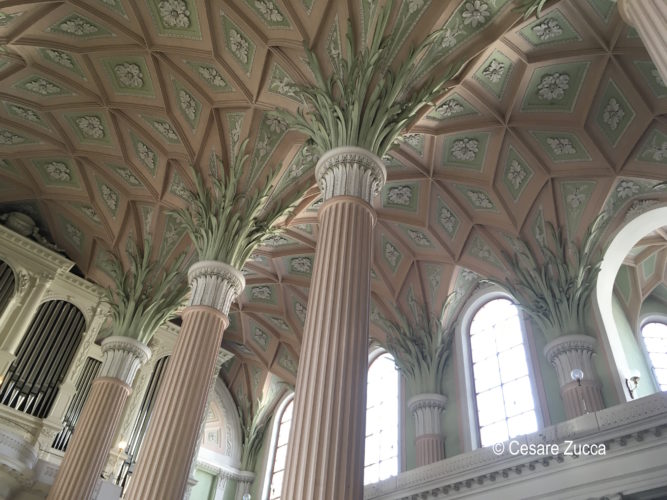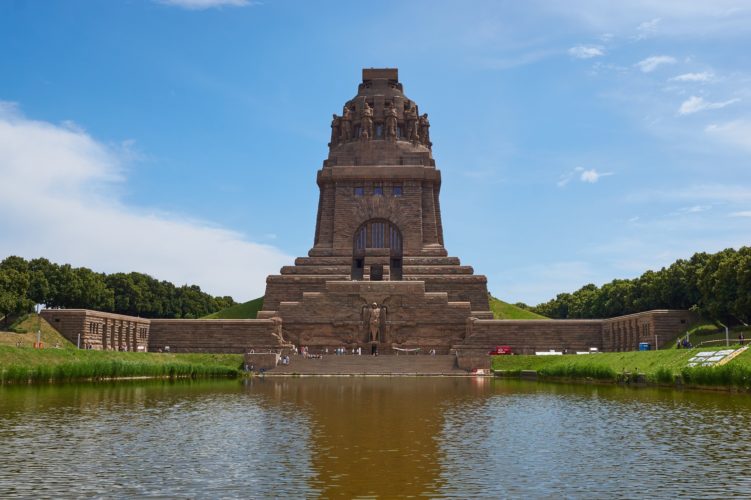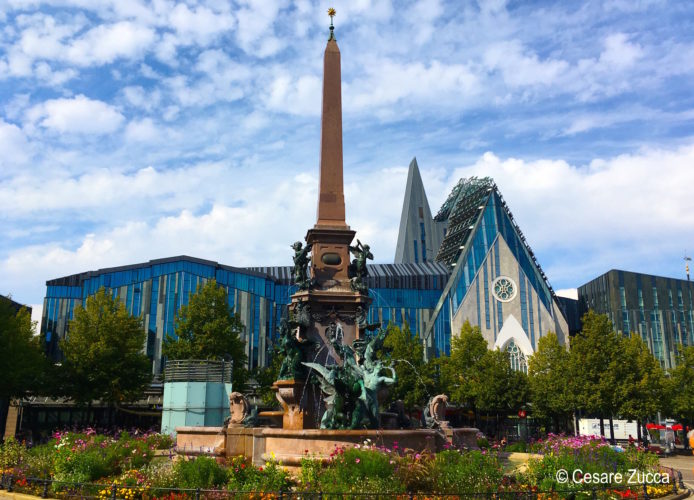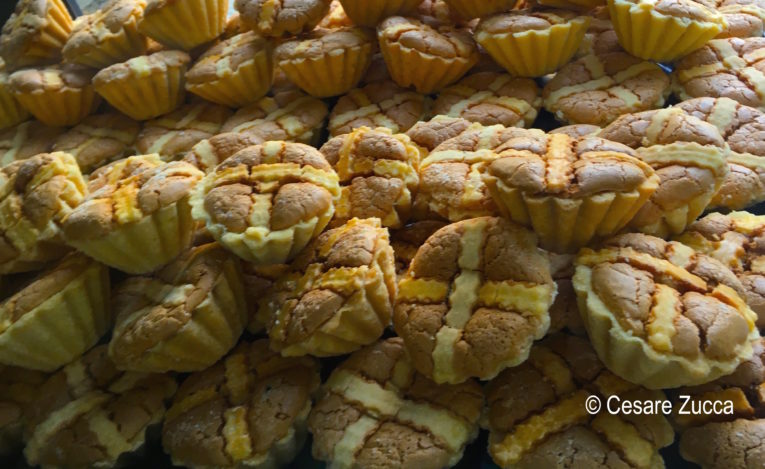Weekend a Lipsia: la musica di Bach e le allodole più ‘dolci’ del mondo…
Weekend a Lipsia, Germania
( in italian and english)-
Spazi verdi, servizi ai cittadini, ottime università, tante occasioni culturali e creative. Da anni Lipsia è in espansione. Dal passato buio della DDR è oggi una meta frizzante, tra quartieri industriali diventati cittadelle d’arte, festival e musei musicali.

La vivace scena artistica di Lipsia è ciò che rende questa città alla moda un parco giochi per giovani creativi dove spiccano lo Spinnerei, un ex cotonificio che ospita artisti da tutto il mondo; il Tapetenwerk – una bella mostra trimestrale tenuta in uno spazio di fabbrica; il Kunstkraftwerk – una galleria d’arte digitale.

DA VEDERE
Chiesa di San Tommaso
Dove Martin Lutero discusse notoriamente i meriti della Riforma e dove Johann Sebastian Bach lavorò come direttore musicale per 27 anni. Lipsia gli dedica un Museo, piuttosto essenziale nei contenuti, ma che comunque vale una visita, soprattutto per i preziosi spartiti originali, scritti dal Maestro.

Chiesa di San Nicola
Arricchita dalle meravigliose colonne-palma di un suggestivo colore rosa.
Il Museo delle Belle Arti
Panometer Leipzig Galleria panoramica a 360 gradi, affrescati dai giganteschi dipinti dell’artista Yadegar Asisi.
Museo in der Runde Ecke sede della mostra permanente dedicata agli anni bui della DDR e del Ministero per la Sicurezza di Stato.
Monumento della Battaglia delle Nazioni. Dire monumentale è poco: alto 91 metri, saliti i suoi 364 gradini, si gode di una vista spettacolare della città.

Tra tutte spicca l’elegante Mädler, proprio dietro al Naschmarkt, una piccola piazza risalente al 1556, dominata dal Alte Handelsbörse, uno splendido edificio barocco.

In città…
Concedetevi una bella passeggiata nel centro storico, magari partendo da
Markt, la piazza principale . che ogni venerdì ospita un mercato contadino
Il Vecchio Municipio del XVI secolo. Museo di Storia copre la storia antica e medievale della città. sezioni dedicate a luminari della musica come Bach, Wagner e Mendelssohn

, Augustusplatz, dominata dal cosiddetto grattacielo “Uni-Gigante”, dove, al 29esimo piano, troverete un ottimo ristorante, con vista della città, ideale per il lunch.

Altra icona di Lipsia è la Birra Gose, fermentata con acido lattico con l’aggiunta di sale da cucina e coriandolo. Si racconta fu scoperta dall’Imperatore Ottone nell’anno 1000.

Ma la vera specialità culinaria di Lipsia è il “Leipziger Lerche” (Allodola di Lipsia), un dolcetto legato al decreto che nel 1876 vietò la caccia alle allodole, che venivano cucinate con erbe e uova. Nacque così un dolcetto chiamato appunto ”allodola”.

E’ una specie di mini crostatina fatta con pasta frolla, marzapane, confettura di albicocca o frutti di bosco. L’ho assaggiata: è piuttosto asciutta e sostanziosa, quindi ottima se accompagnata, o meglio ancora bagnata, da una cioccolata calda o da un cappuccino.
Le migliori ?
Quelle del Cafe Kandler, nel cuore della città.

Ecco la ricetta del Leipziger Lerche

Ingredienti
Burro 250 gr
Farina 300 gr
Zucchero 90 gr
Mandorle 150 gr
Uova 1
Brandy 1 cucchiaio
Confettura Albiccocche 100 gr
Zucchero A Velo 100 gr
Fecola Di Patate 50 gr
Estratto Di Mandorle Amare 5 gocce
Albumi 3

Preparazione
Versate sulla spianatoia 250 gr di farina e fate la fontana, unite 90 gr di zucchero, 1 uovo, il brandy e 150 gr di burro morbido. Impastate bene il tutto, poi fate riposare l’impasto almeno 30′ in frigorifero. Stendete la pasta (spessore di 1 cm) in sfoglia. Rivestiteci degli stampini tondi da crostatine imburrati ed infarinati, poi punzecchiate la pasta con i rebbi di una forchetta e stendete in ogni stampino sopra la frolla, un po’ di confettura di albicocche. Lavorate il restante burro con lo zucchero a velo, unite il tuorlo e l’estratto di mandorle, 50 gr di farina, la fecola e amalgamate bene il tutto. Unite gli albumi montati a neve (1+3), la mandorle tritate finemente nel mixer (per velocizzare compratele già in farina) e mescolate bene. Ricoprite ogni stampino fino ai bordi con il preparato.
Cuocete i dolcetti in forno già caldo a 190° per circa 20-25′ o comunque fino a cottura.
INFO
Cafè Kandler
Travel Lipsia
Next page the english version. Click Next>

Weekend in Leipzig
Green spaces, services to citizens, excellent universities, many cultural and creative opportunities. Leipzig has been expanding for years. From the dark past of the GDR it is now a sparkling destination, between industrial districts that have become citadels of art, festivals and music museums. Leipzig’s vibrant art scene is what makes this hip city a playground for young creatives. One of Leipzig’s main attractions is its vibrant art scene which includes the Spinnerei, a former cotton mill hosting artists from around the world; the Tapetenwerk – a beautiful quarterly exhibition held in a factory space; the Kunstkraftwerk – a digital art gallery.

TO BE SEEN
Church of San Tommaso
Where Martin Luther famously discussed the merits of the Reformation and where Johann Sebastian Bach worked as a musical director for 27 years. Leipzig dedicates a museum to him, rather essential in content, but which is still worth a visit, especially for the precious original scores, written by the Maestro.

Church of San Nicola Enriched by the wonderful palm-columns of a suggestive pink color.
The Museum of Fine Arts
Panometer Leipzig 360-degree panoramic gallery, frescoed by giant paintings by the artist Yadegar Asisi. 
Museum in der Runde Ecke home to the permanent exhibition dedicated to the dark years of the GDR and the Ministry for State Security.
Monument of the Battle of the Nations. 91 meters high, after climbing its 364 steps, you can enjoy a spectacular view of the city.


Take a nice walk in the historic center, perhaps starting from Markt, the main square. which hosts a farmers’ market every Friday The Old Town Hall from the 16th century. History Museum covers the ancient and medieval history of the city. sections dedicated to music luminaries such as Bach, Wagner and Mendelssohn.

, Augustusplatz, dominated by the so-called “Uni-Gigante” skyscraper, where, on the 29th floor, you will find an excellent restaurant, with a view of the city, ideal for lunch.

Another Leipzig icon is Gose Beer, fermented with lactic acid with the addition of table salt and coriander. It is said that it was discovered by Emperor Otto in the year 1000.

But the real culinary specialty of Leipzig is the “Leipziger Lerche” (Lark of Leipzig), a sweet linked to the decree that in 1876 banned the hunting of larks, which were cooked with herbs and eggs. Thus was born a sweet called “lark”

It is a kind of mini tart made with shortcrust pastry, marzipan, apricot jam or berries. I tasted it: it is rather dry and substantial, so excellent when accompanied, or better still wet, with a hot chocolate or cappuccino.
The best ones ? At Cafe Kandler, in the heart of the city.

Ecco la ricetta del Leipziger Lerche

Ingredients
Butter 250 gr Flour 300 gr Sugar 90 gr Almonds 150 gr Eggs 1 Brandy 1 tbsp Apricot jam 100 gr Powdered Sugar 100 gr Potato starch 50 gr Bitter Almond Extract 5 drops Egg whites 3
Preparation
Pour 250 g of flour onto a pastry board and make a well, add 90 g of sugar, 1 egg, brandy and 150 g of soft butter. Knead everything well, then let the dough rest for at least 30 ‘in the refrigerator. Roll out the dough (1 cm thick) into a sheet. Cover the round molds with buttered and floured tarts, then prick the dough with the prongs of a fork and spread a little apricot jam in each mold over the pastry. Work the remaining butter with the icing sugar, add the yolk and almond extract, 50 grams of flour, the starch and mix well. Add the whipped egg whites (1 + 3), the finely chopped almonds in the mixer (to speed up buy them already in flour) and mix well. Cover each mold up to the edges with the preparation. Bake the sweets in a preheated oven at 190 ° for about 20-25 ‘or in any case until cooked.
INFO
Cafè Kandler
Travel Lipsia